Recent Articles
Popular Makes
Body Types
2020 Tesla Model S vs. 2020 Porsche Taycan
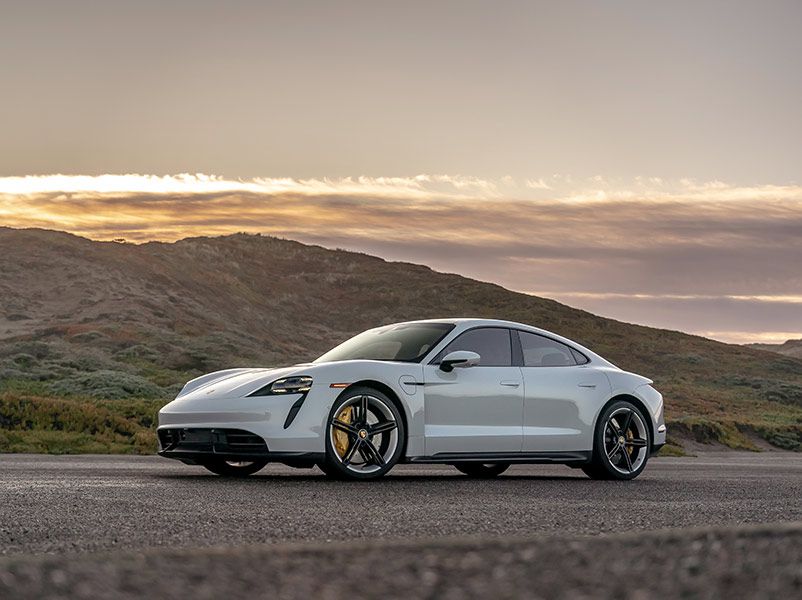
2020 Porsche Taycan ・ Photo by Porsche
Tesla revolutionized the electric car market when it introduced the Model S sedan in 2012. Fast, sexy, and efficient, it didn’t merely put Tesla on the map — it proved the EV market was real. Eight years later, the 2020 Tesla Model S is still the brand’s largest car, its technology and design remain on the cutting edge, and it remains extremely popular.
The all-new 2020 Porsche Taycan is the first all-electric four-door sedan from any automaker to really take on Elon Musk’s Tesla Model S head-on. Like the rest of the brand’s highly praised lineup, the Taycan brings extreme style and performance to the fight. And like most Porsches, it also comes with a six-figure price tag. But which is best? Let’s examine the 2020 Tesla Model S and 2020 Porsche Taycan in key areas and decide.
Styling and Design
Before the Model S, all EVs were homely little things. Some still are, but the Model S proved an electric car doesn’t have to be ugly. Designed and built in California, the Tesla Model S hasn’t changed much since 2012, although Tesla did give the sedan a more aggressive nose a few years ago. Along with Porsche’s Panamera, the Model S popularized the four-door hatchback bodystyle, which is now very common. Painfully beautiful when it debuted nearly a decade ago, the Model S still looks great with its long low silhouette and wide muscular stance.
According to Porsche, the name of its first all electric model is pronounced tie-kahn, not tay-can. The company says it’s composed of two terms of Turkish origin and can be roughly translated as “soul of a spirited young horse.” Although it looks like a hatchback, the 2020 Porsche Taycan has a traditional trunk. Its overall exterior design is similar to the Porsche Panamera, but it’s a bit more futuristic with exaggerated front fender scoops and more radical headlamps. There’s also plenty of Porsche 911 in the curvature of its roof and hunkered down stance.
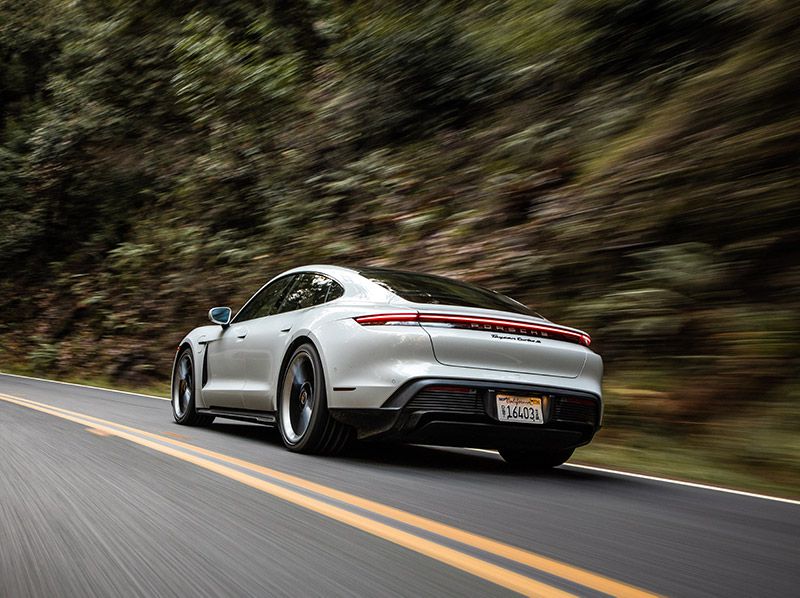
Photo by Porsche
Comfort and Cargo
With a length of 196 inches and a generous 116.2-inch wheelbase, the 2020 Tesla Model S is larger than it looks. Its interior is incredibly spacious, so the Model S functions well as a family car, and it offers a massive amount of cargo room. Behind its rear seat is 26.3 cubic feet of space, and there’s 60.2 cubic feet with its backseat folded.
Both sedans feature very comfortable seats and quiet interiors, but the Tesla has the larger interior. On the outside, the new Porsche Taycan is about the same size as the Tesla, but the Model S is slightly taller and offers a considerably more back seat space. It seats five comfortably, while the new Porsche Taycan is only a four-seater. It has the smaller rear trunk as well, with just 12.9 cubic feet of space. Both vehicles also have a small front trunk, or frunk, which is great for stashing smaller items.
Tesla Model S
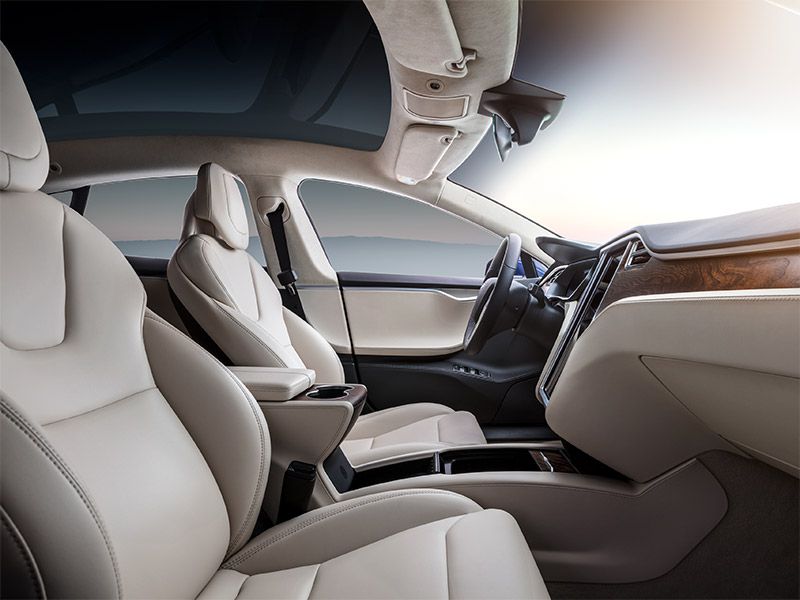
Photo by Tesla
Infotainment System
Eight years ago, the only thing more revolutionary than the Tesla’s powertrain was its infotainment system. Well, it’s still the best in the industry. Everyone else continues to play catch-up, including Porsche. From the Tesla’s massive touchscreen, which is still the largest in the land, to the speed of its microprocessors and the system’s extensive connectivity, it remains peerless — and Tesla continues to make it better.
Instead of one massive screen, Porsche gives you two large displays, as well as the industry’s first curved digital instrument cluster, which is pretty cool. Like the Tesla, the Taycan’s climate controls, infotainment system, and many other features, including its seat heaters, are controlled by touchscreen. Its infotainment system isn’t revolutionary, but it’s intuitive, quick to respond to your touch, and equipped with clean and colorful graphics. Apple CarPlay is standard and its Google Assistant is almost as good as the voice command system in the Tesla. However, Porsche does not support Android Auto integration.
Tesla Model S
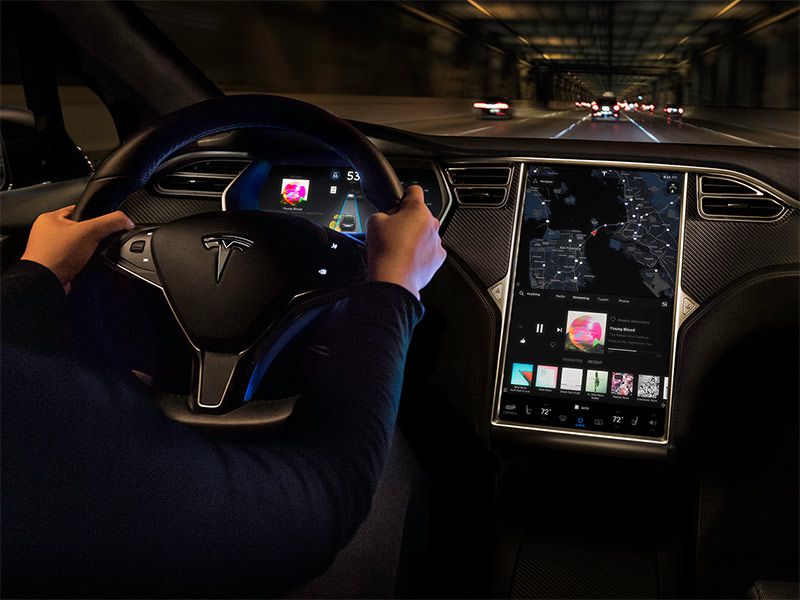
Photo by Tesla
Safety and Technology
Every Model S comes standard with emergency braking, collision warning and blind-spot monitoring. Tesla’s Autopilot, which is among the most advanced driver-assistance suites, is also standard. It’s also one of the most controversial, as there have been several high-profile accidents involving the technology, which can almost drive the sedan down the highway for you. The car can also park itself. Think of it as the ultimate cruise control system as it steers, accelerates, and applies the brakes all on its own. All-wheel drive is standard.
The Model S has performed well in crash tests executed by the National Highway Traffic Safety Administration, while the Porsche has yet to be tested. The Taycan is also equipped with all-wheel drive and a long list of safety tech and driver aids, though many are options. Forward-collision warning and automated emergency braking are standard along with a lane-departure warning and lane-keeping assistance, but adaptive cruise control, front and rear parking sensors, blind-spot monitoring, and a rear cross-traffic alert cost extra.
Tesla Model S

Photo by Tesla
Power and Performance
Tesla offers two versions of the Model S, and both have all-wheel drive and the thrust of two electric motors. Tesla doesn’t officially state the power of its vehicles, but this is one of the quickest cars in the world. The company says the Long Range Plus can burst to 60 mph in just 3.7 seconds and the Performance can do it in an unbelievable 2.3 seconds. That’s quicker than most supercars, including Ferrari’s new 710-horsepower F8 Tributo. Its powertrain is also exceedingly smooth and refined, and like all EVs, it goes about its business very quietly, with just a whir from its electric motors.
Also silent and violent is the all-wheel drive Porsche Taycan, which is offered in three flavors. Porsche says the 522-horsepower Taycan 4S can burst to 60 mph in just 3.8 seconds and the 670-horsepower Turbo can do it in 3.0 seconds. The acceleration of the 750-horsepower Turbo S, however, literally snaps you neck as it reaches 60 mph in just 2.6 seconds. Though three blinks slower to 60 mph than the Tesla Model S Performance, the Porsche Taycan Turbo S — with its unique two-speed transmission — pulls away as the two cars pass 100 mph. By 150 mph, the Taycan is several seconds ahead.
Tie
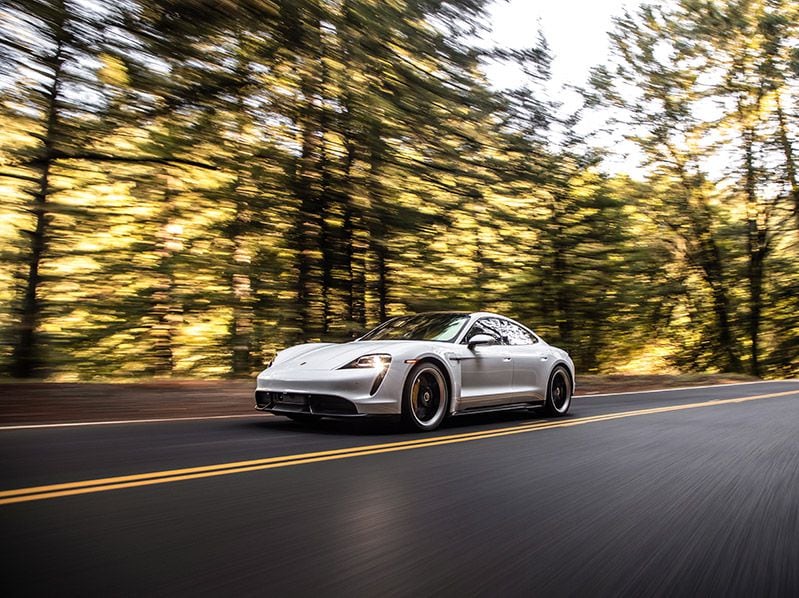
Photo by Porsche
Battery Range
Tesla also continues to the lead the way when it comes to the efficiency and range of its powertrains, and the Model S recently became the first EV with over 400 miles of range. The 2020 Tesla Model S Long Range Plus has an incredible 402 miles of range, by far the most of any other EV on the market. The more powerful Performance model offers 348 miles of range, still more than any other EV.
The new Porsche Taycan doesn’t even come close to those numbers. The EPA rates the Taycan 4S battery range at just 203 miles, the Taycan Turbo at 201 miles, and the Turbo S at just 192 miles. In a further advantage, Tesla also offers its customers exclusive access to its network of fast chargers located all around the country. The company says there are over 16,000 Superchargers in more than 1,800 locations. The Taycan is compatible with fast chargers from brands like Charge Point, but that network isn’t as comprehensive as Tesla's.
Tesla Model S
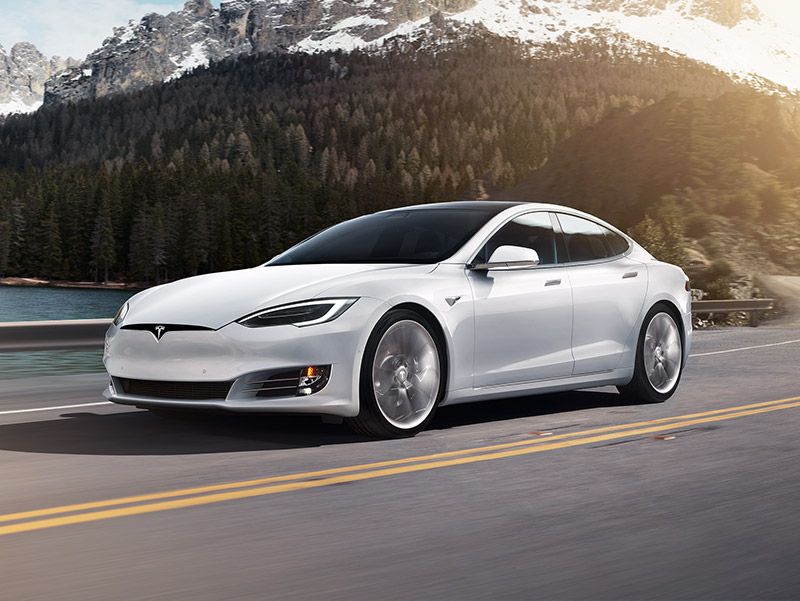
Photo by Tesla
Driving Dynamics
These are two of the quickest sedans in the world, and they both back up all that thrust with impressive handling. The Tesla Model S offers plenty of grip and good balance. The steering is light and precise, its air suspension is well-tuned, and its brakes are powerful. It’s fun to toss it into a turn, hit the gas and burst down the road toward the next series of corners.
But the Taycan is a Porsche. A real Porsche. And its dynamics are superior to the Teslas. It weighs more, but offers more grip, better balance, and more steering feel. Both cars are fun and engaging to drive, but the Porsche feels better the harder you push it, and it can ultimately handle more pace.
Porsche Taycan
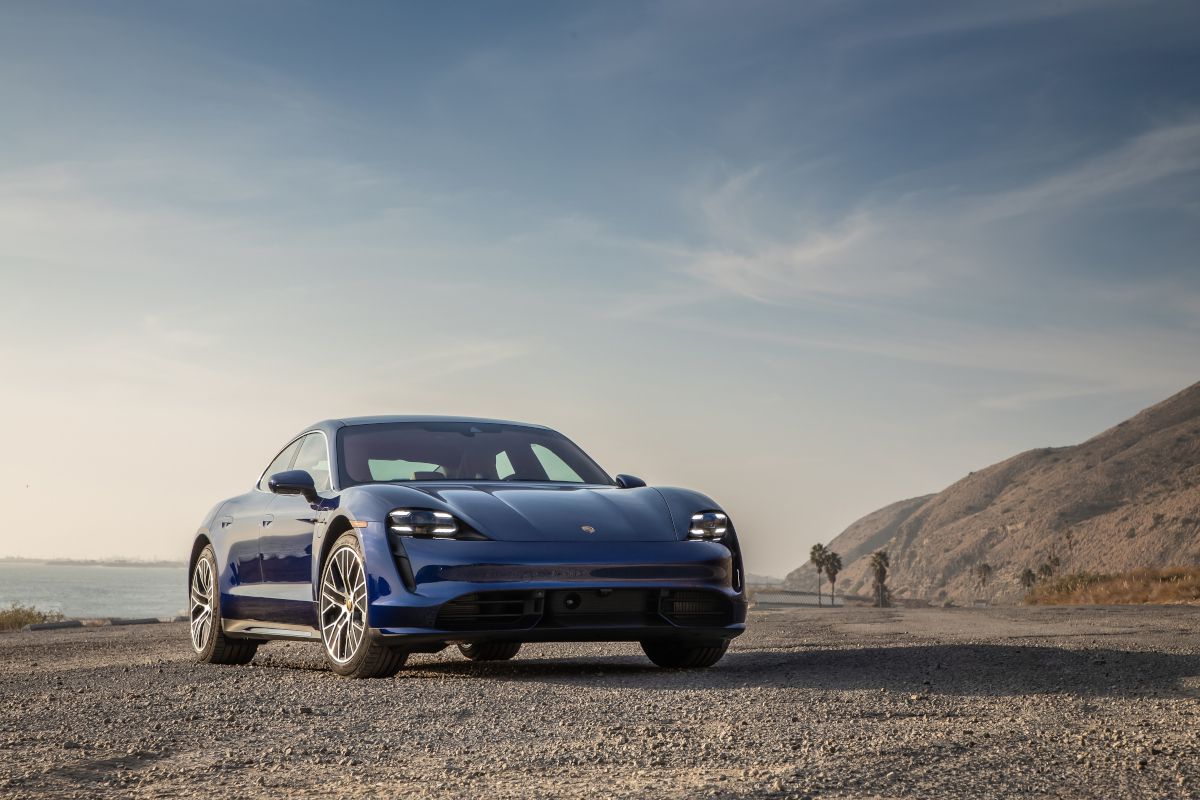
Photo by Porsche
Value
With a base price of $81,190, including a $1,300 destination fee, the Model S Long Range Plus costs considerably less than the Porsche Taycan. The Performance, which costs $20,000 more, also offers more value than its rival, considering it's quicker, offers more range, and has more seating capacity.
All Taycans cost over $100,000. Prices start at $105,150, including $1,350 delivery fee. This gets you the Taycan 4S with the base battery pack and 522 horsepower. Porsche offers an optional larger battery pack for about $6,500 that increases output to 563 horsepower. The Taycan Turbo costs $152,250, while the $186,350 gets you a Turbo S.
Tesla Model S
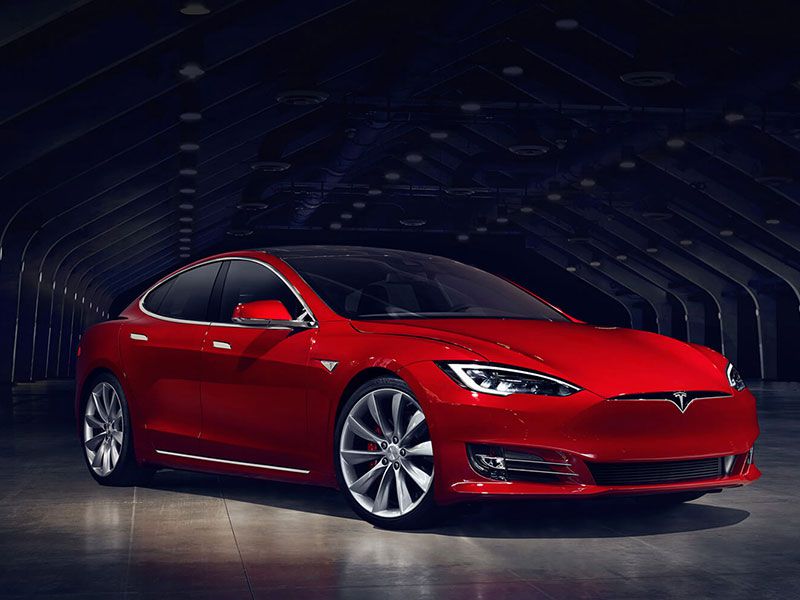
Photo by Tesla
Verdict
Porsche has not only created an incredible machine, but the brand’s first EV is now on the list of the world’s great sedans. The Taycan betters the Tesla Model S when it comes to exterior design and driving dynamics, and nearly matches the American’s rocket-sled acceleration. It also features superior fit and finish, an extremely comfortable interior, and supple ride quality.
However, the 2020 Tesla Model 3 fights off its new rival with far greater battery range, superior acceleration, an industry-leading infotainment system, more cargo space, more standard safety technology, and a much lower price. The new Porsche Taycan is special, but the Tesla Model S is still the best EV sedan in America.
Tesla Model S
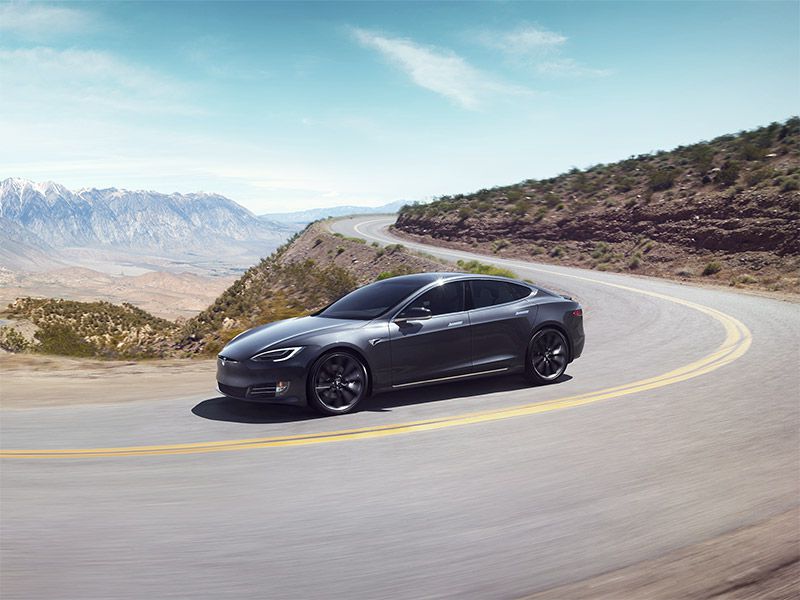
Photo by Tesla